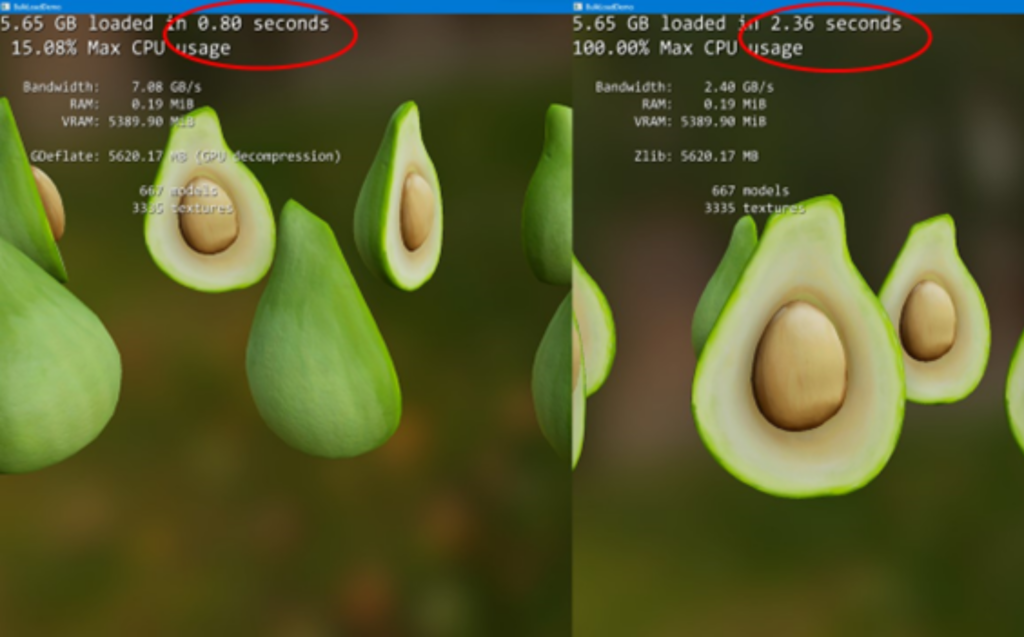Microsoft announces DirectStorage 1.1 update
DirectStorage, the popular software development kit, is to receive an update with new features and configurations.
Back in March 2022, IFA News reported the release of DirectStorage, a software development kit which had been anticipated for over a year. The software boosts gaming performance on PCs by streaming large amounts of data from a solid state drive.
Microsoft has recently announced DirectStorage 1.1, which will bring a range of updates and new features to the software.
“When we shared our first public release of DirectStorage on Windows to reduce CPU overhead and increase IO throughput, we also shared that GPU decompression was next on our roadmap,” wrote Senior Program Manager Cassie Hoef in the announcement.
“We are now in the final stretch of development and plan to release DirectStorage 1.1 with GPU Decompression to developers by the end of 2022.”
This news was followed by an update on new features for gamers and game developers using DirectStorage 1.1
Microsoft introduces GPU decompression
As explained by Microsoft, video games require large amounts of data to host environments featuring objects, landscapes and characters. These elements come in the form of assets, which add up to hundreds of gigabytes of data. Assets are therefore compressed so that the package size of a game is decreased. Assets are transferred to the system memory when a game is being played. Then, a central processing unit decompresses the data, and the results are copied into memory. This process requires long load times, and also puts a limit on how much detail an open world environment can contain.
Microsoft’s original DirectStorage offered users a high bandwidth, apparently improving the transfer of data. The company claims that games that are enabled with DirectStorage, and that are installed on NVMe drives, have load times reduced by up to 40%.
With DirectStorage 1.1, Microsoft has made adjustments to the decompression work that is usually done on the CPU. Now, assets will be decompressed using the GPU, a process known as “GPU decompression.”
“Graphics cards are extremely efficient at performing repeatable tasks in parallel, and we can utilise that capability along with the bandwidth of a high-speed NVMe drive to do more work at once,” wrote Ms. Hoef regarding the announcement.
“As a result, the amount of time it takes for an asset to load decreases, reducing level load times and improving open world streaming.”
Microsoft provided an example of this in the announcement, showing that scenes load almost three times faster when DirectStorage is running with GPU decompression instead of CPU decompression. Furthermore, the CPU is left free to be used for other game processes.
“When DirectStorage 1.1 [releases], it kicks off a new journey for game developers to make full use of gaming hardware and speed up load times for PC games over the next few years,” explained Ms. Hoef.

Microsoft introduces GDeflate for game developers
As well as introducing GPU decompression, Microsoft also announced GDeflate, a new compression format contributed by NVIDIA, which comes with DirectStorage 1.1
“NVIDIA and Microsoft are working together to make long load times in PC games a thing of the past,” said John Spitzer, VP of Developer and Performance Technology at NVIDIA.
“Applications will benefit by applying GDeflate compression to their game assets, enabling richer content and shorter loading times without having to increase the file download size.”
GDeflate is described as a lossless data compression standard that is purposefully-developed for high-throughout GPU decompression. Microsoft says that GDeflate offloads demanding decompression operations that would normally be handled by the CPU, to the GPU. This apparently saves system bandwidth as well as on-disk footprint.
Microsoft has also noted that GDeflate compression is data-parallel, which means it can be scaled across different GPU architectures. The software giant also says it is working with industry partners AMD, Intel and NVIDIA to provide tailored software for this format.

